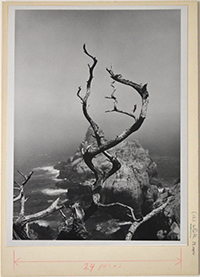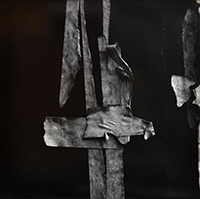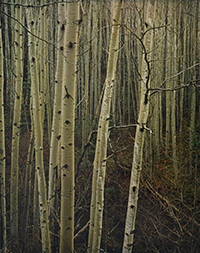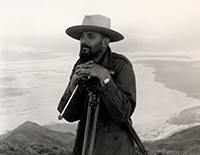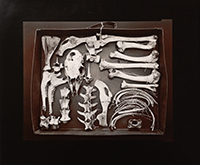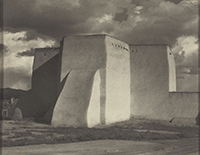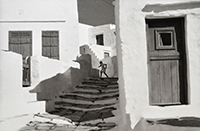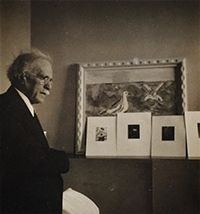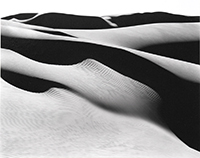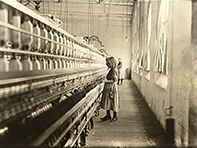History of Photography
-
Straight Talk on Collecting Photography: I Saw it for Less
This week we are continuing our series on collecting photography. We have produced a series of videos along with added illustrations and handouts that can be viewed weekly on our website. We hope to cover many aspects that we feel are important to both beginning and seasoned collectors. The topics for the videos are a result of many conversations we have had in our gallery with visitors over the past forty years.
Today’s video focuses on identifying some of the attributes of photographs prints that affect their values. We discuss differences between vintage and modern prints, as well as portfolio and limited edition prints. Additionally, we talk briefly about prints that were produced by the artist but were not meant for sale.
To view the video click here
-
Straight Talk on Photography - Looking at Photographs Part 2
Making Photographs, Not Taking PhotographsToday’s video focuses on making, not taking photographs. The work included was made throughout various periods within the history of photography. The video begins with photographers from the Institute of Design in Chicago, and its curriculums influence on the medium, and concludes with two contemporary photographers who are pushing the boundaries of traditional photography.
To view the video click here
-
Straight Talk on Collecting Photography - Looking at Photographs Part 1
This week we are continuing our new series about collecting photography. The plan is to produce a series of videos along with added illustrations and handouts that can be viewed weekly on our website. We hope to cover many aspects that we feel are important to both beginning and seasoned collectors. The topics for these videos are a result of the many conversations we have had in our gallery with visitors these past forty years.
Today’s video focuses on looking at the work of a number of photographers and discussing their imagery and approach. Below are a series of illustrations that accompany the video as well as a fun handout that dates to 1934 regarding the sale of Edward Weston’s photographs.
To view the video click here
-
Straight Talk on Collecting Photography - Cameras and Format
This week we are continuing our new series about collecting photography. The plan is to produce a series of videos along with added illustrations and handouts that can be viewed weekly on our website. We hope to cover many aspects that we feel are important to both beginning and seasoned collectors. The topics for these videos are a result of the many conversations we have had in our gallery with visitors these past forty years.
Today’s video focuses on different cameras and their formats as they relate to photographic prints. Below are a series of illustrations that accompany the video, as well as a link to the Rochester Institute of Technology’s Image Permanence Institute.
To view the video click here
-
Straight Talk on Collecting Photography: Prints and Process
This week we are embarking on a new series about collecting photography. The plan is to produce a series of videos along with added illustrations and handouts which can be viewed weekly on our website. We hope to cover many aspects that we feel are important to both beginning and seasoned collectors. The topics for these videos are a result of the many conversations we have had in our gallery with visitors these past forty years.
Today’s video focuses on the various kinds of 20th-century photographic prints, with brief descriptions of each process. Below are a series of illustrations that accompany today’s video, as well as an interesting article written by Alfred Stieglitz and translated by Beaumont Newhall about the importance of “the photographic print.”
To view the video click here
-
Creative Spirits: Three Painters - Three Photographers
The history of art, music, and literature is filled with passionate love affairs between creative spirits. In understanding relationships for artistic couples, hints may be found in their work. This is the premise behind the idea for today’s newsletter. All are artists in their own right while also influencing and supporting each other’s work and were partners in life and art.
Janet became fascinated with the idea many years ago… noticing that the three couples we write about today, Alfred Stieglitz and Georgia O’Keeffe, Paul Strand and Rebecca Strand (Salsbury James), and Eliot and Aline Porter were three photographers and three painters, all connected to Stieglitz and except for Stieglitz, all connected to New Mexico.
-
Signature Style
Previously in our weekly newsletters, I mentioned some of the differences between “technique” and “art”. Good technique does not necessarily make a good artwork, i.e.: you can be a great technician and your prints may be beautiful and luminous, but if the image or subject is not of interest – the works will be lacking. The reverse is less true, you can make a fantastic photograph and if the print isn’t great, often you can still get by with the power of the visual impact. That said, when we look at a work we are often hoping to find a kind of “marriage” between vision and technique. One where you can appreciate the imagery and the technique doesn’t distract from your appreciation of it. Even great photographs are hard to look at if they are not printed well, creased or unspotted.
To view the video click here
-
Equivalents
“Through clouds I wanted to put down my philosophy of life – to show that my photographs were not due to subject matter – not to special trees, or faces, or interiors, to special privileges, clouds were there for everyone- no tax as yet on them – free.”
Considered by many the father of the art of photography both as a noted gallerist, artist, and through his efforts as editor of both Camera Notes and Camera Work, two publications dedicated to elevating people’s understanding of the photographic medium.
To view the video click here
-
f64
Group f64, although short-lived, had an incredible impact on the art of photography in the United States. These West Coast photographers and their shared principals formed a truly American approach to photography for both photographers and students of the medium in the 20th Century. The ideals of the group were to use a large-format camera to produce contact prints, the purest representation of a negative with no enlargement. They stressed no cropping or other hand manipulations, and the use of a very small aperture, which produced images with an extremely large depth of field. Also stressed was that the photographer who took the photograph was the one who printed it. Therefore guaranteeing the interpretation was true to the negative. Unlike what was common among many of the European photographers who felt photographs were made by the photographer and the prints were made by darkroom technicians.
To view the video click here
-
Labor
In celebration of our Labor Day holiday this weekend we devote today’s History of Photography newsletter to three photographers who focused their cameras on labor. They are certainly not the only three but Jacob Riis, Lewis Hine, and Sebastião Salgado devoted their photographic efforts to not just photograph but to completely give their energies to help bring about both awareness and change for the lives of workers. Their photographs and publications helped significantly to bring about changes in everything from child labor, wages, health and safety regulations, and most importantly, legislation.
